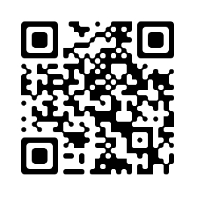 January 2022
January 2022
The pandemic has resurrected interest in QR – Quick Response – codes. These are those sophisticated square bar codes seen on print material. When scanned with a smartphone a website url appears in your browser.
Restaurants have found it easier to provide a QR code on the table in place of a menu or to present daily specials that previously would be printed on a chalkboard. Another QR code may link directly to a COVID-19 screening questionnaire guests must complete before being admitted to the restaurant. The system works so well that many may not go back to printed menus once the pandemic is over.
QR codes were initially developed in the 1990s for the automotive industry. Toyota’s Denso Wave subsidiary was asked by manufacturers to develop scanners that could read bar codes more quickly. At the time bar codes could store only 20 alphabetical characters and workers were required to scan up to 1,000 per day. QR codes made it more efficient to track vehicles and parts during manufacturing. They improved efficiency by a factor of ten and ended up being used for inventory management and shipment tracking.
Film distributors utilized QR codes on posters that linked to movie trailers. They were promoted by BlackBerry as a way for users to quickly add each other as contacts on its messaging service.
Today’s smartphones are more sophisticated and scanning a QR code is identical to taking a picture. Point your phone at the QR code, wait for your phone to recognize the image, and click or follow instructions. Up pops a url or a message asking if you want to go to the website. (Older mobile phones may require use of QR Reader which is included or can be downloaded.) With people wanting to avoid handling paper, pens, forms and other electronic devices during the pandemic, QR codes present a simple solution.
To test your smartphone’s QR Code scanning ability, try scanning the QR Code alongside the title of this article. If all goes well, your smartphone browser should automatically open to the Toronto Condo News website.
Condominium communities can utilize QR codes. Many materials are posted electronically for residents and owners. This can include Annual General Meeting information, financial statements and updated rules or procedures. All are typically large documents that are expensive to print and distribute, and which cannot be posted in an elevator or lobby. It is a simple process to prepare a single page or notice with a large headline drawing attention to an important matter and including a QR code. Anyone in the elevator can scan the QR code with their smartphone and read the information at their convenience. QR code generators are accessible for free on the internet and allow codes to be created in less than two minutes.
QR codes are an elegant solution to providing information without dealing with long or cumbersome urls that are difficult to reproduce.







